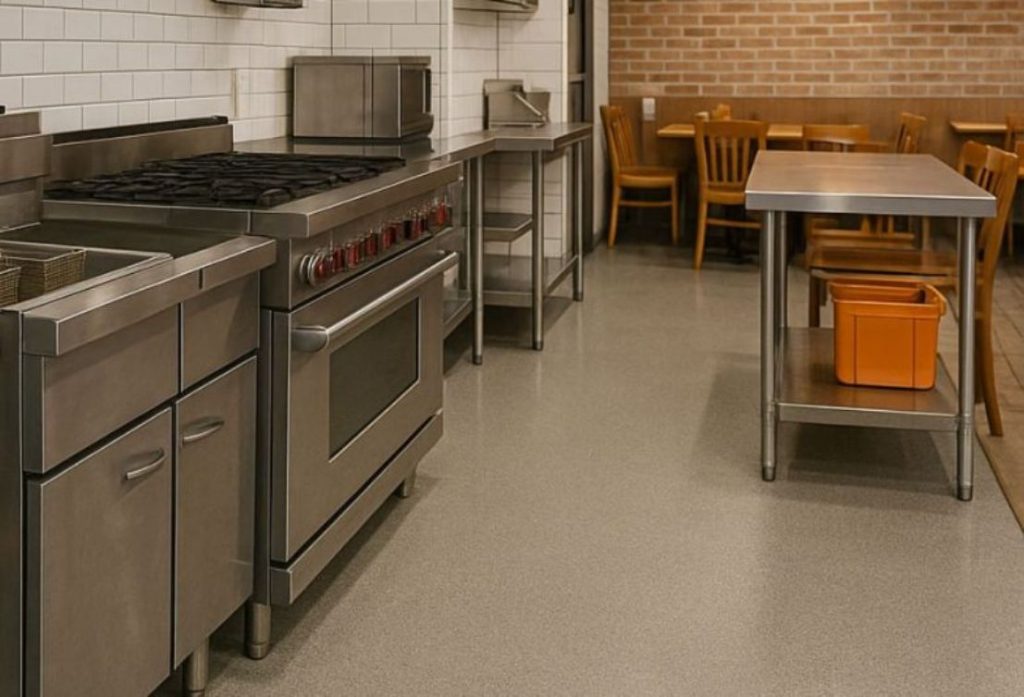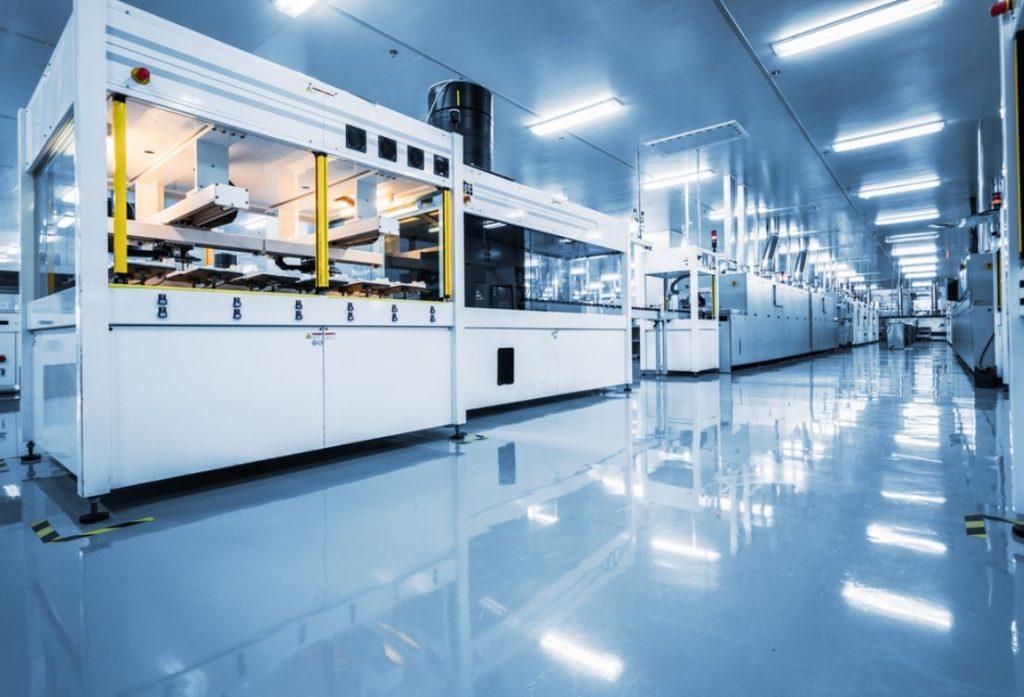Car parks go through a lot – daily traffic, exposure to the elements, and constant wear. The flooring needs to be tough, easy to maintain, and safe for everyone using the space.
This article looks at how epoxy flooring for car park environments meets those demands while offering practical value. You’ll also find insights on customisation, durability, and upkeep based on FLOORFINDER’s on-ground experience.
Key Takeaways
- Epoxy car park flooring provides exceptional durability, chemical resistance, and enhanced safety in high-traffic areas.
- Key considerations cover traffic load, environmental exposure, surface condition, and maintenance needs.
- Customisation options span colour-coded zones, anti-slip textures, directional markings, and branded visuals.
- Epoxy performs best indoors, while PU is suited for outdoor spaces exposed to UV and weather and temperature changes.
- Installation begins with surface preparation, followed by coating application, line markings, and curing.
- Maintaining the floor requires a regular cleaning regime, prompt spill removal, and periodic surface inspections.
What You’ll Gain with FLOORFINDER Epoxy Flooring for Car Parks
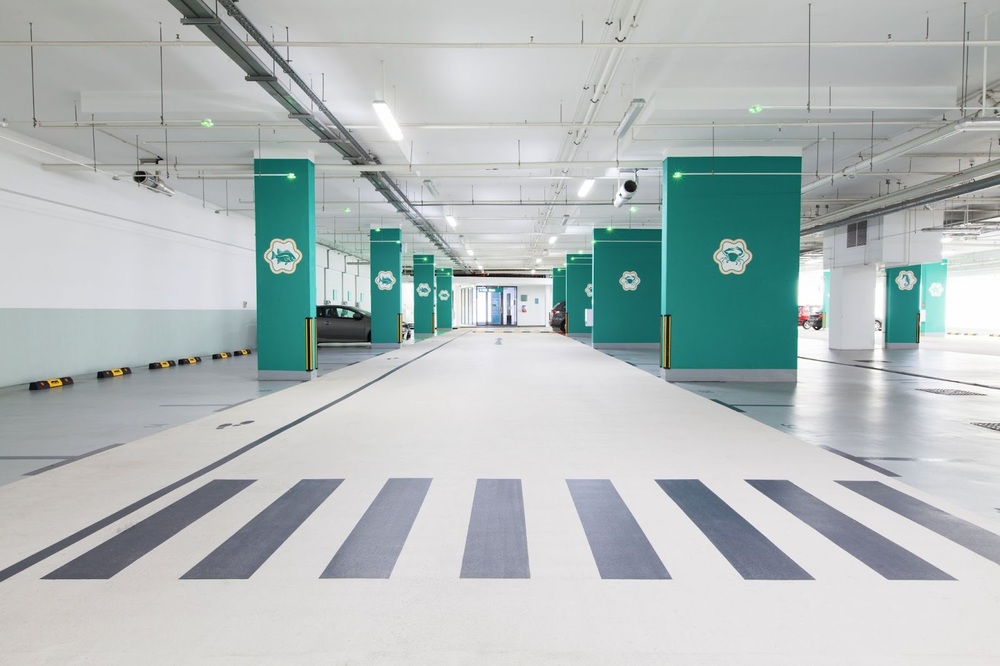
FLOORFINDER offers epoxy flooring systems tailored for car parks that need to stay functional, safe, and easy to manage. Below are some of the practical benefits you can expect.
a) Handles Heavy Use
It stands up well to constant tyre friction and frequent vehicle movement without breaking down or showing early signs of wear.
b) Tough Against Spills and Weather
Resistant to oil, fuel, chemicals, and water damage, which makes it suitable for both enclosed and semi-exposed areas.
c) Resistant Surface Technology
Designed to endure friction, fluid spills, and harsh conditions without compromising the surface.
d) Easy to Maintain
The smooth, sealed finish makes cleaning quick and straightforward, helping reduce downtime and maintenance costs.
e) Improves Safety and Visibility
Anti-slip coatings and colour-coded zones (such as driveways, bays, and walkways) make the space safer and easier to navigate.
For property managers, it’s a dependable choice that balances long-term use with minimal upkeep and a clean, organised finish.
Choosing the Right Car Park Flooring: What Matters Most
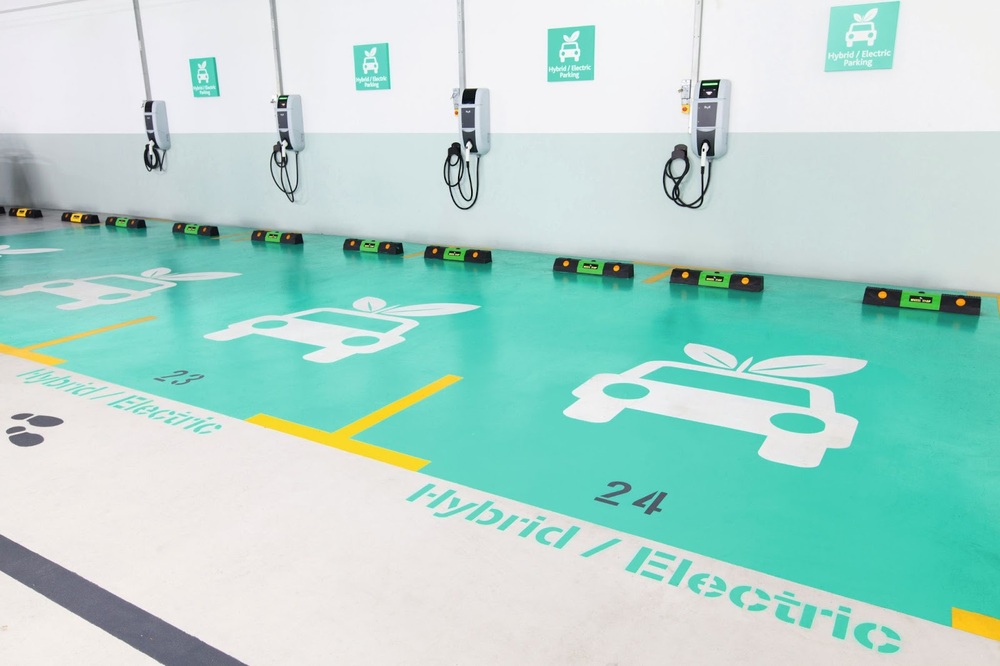
Every car park has different demands – location, usage, and exposure all play a role. These key considerations will help you identify the most suitable flooring system for your space.
| Factor | What to Consider |
| Indoor vs Outdoor Exposure | Outdoor areas need UV- and weather-resistant flooring; indoor spaces may prioritise ventilation-safe, low-odour systems. |
| Vehicle Load & Traffic Frequency | Heavier vehicles or constant movement require flooring with high load-bearing strength and surface durability. |
| Surface Condition | Cracks, moisture, and uneven areas must be repaired to ensure long-lasting performance. |
| Zoning & Layout | Spaces benefit from clear markings for bays, walkways, and restricted areas to improve safety and flow. |
| Safety Features | Anti-slip textures, ramp grip, and safety lines are essential in high-risk or sloped areas. |
| Budget vs Durability | Evaluate how initial cost compares to long-term performance and lifespan of the system. |
| Maintenance Capacity | Choose a flooring system that fits your team’s ability to maintain it regularly. |
| Application Time & Completion Period | Consider the downtime allowed for installation—some systems offer faster curing or phased application. |
| Odour & Application Safety | Low-VOC, odour-free, and non-hazardous materials are preferred in enclosed or active environments. |
| Fire Resistance | Fire-rated flooring is crucial in enclosed or high-risk areas to meet safety standards. |
It’s better to figure out what the space really needs before locking in a decision.
Looking for safer, low-emission options? Learn how VOC free flooring can support healthier, more sustainable car park environments.
Customise Your Car Park Flooring with Purpose

Every car park operates differently, and the flooring should reflect that. Based on FLOORFINDER’s experience, thoughtful customisation enhances safety, flow, and overall usability. Here are several ways we tailor car park flooring to fit specific site needs:
| Customisation | Purpose & Benefit |
| Colour-Coded Zones | Define driveways, bays, walkways, and restricted areas to improve navigation and visual clarity. |
| Anti-Slip Finishes | Enhance surface grip on ramps and wet areas to minimise slip risks and improve pedestrian safety. |
| Reflective & UV-Resistant Coatings | Improve visibility in outdoor or semi-exposed areas and prevent fading under sunlight. |
| Directional Markings & Safety Symbols | Guide traffic flow and reinforce safety without the need for additional signage. |
| Custom Logos & Branded Elements | Add reserved space indicators, logos, or brand colours for a clean, professional appearance. |
| System Build-Up Based on Usage | Adjust the number of layers, thickness, and materials according to traffic load and durability needs. |
Customisation is a practical way to make your car park flooring safer, clearer, and easier to maintain over time.
DECK ONE vs Epoxy vs PU Flooring for Car Parks: What’s the Difference?
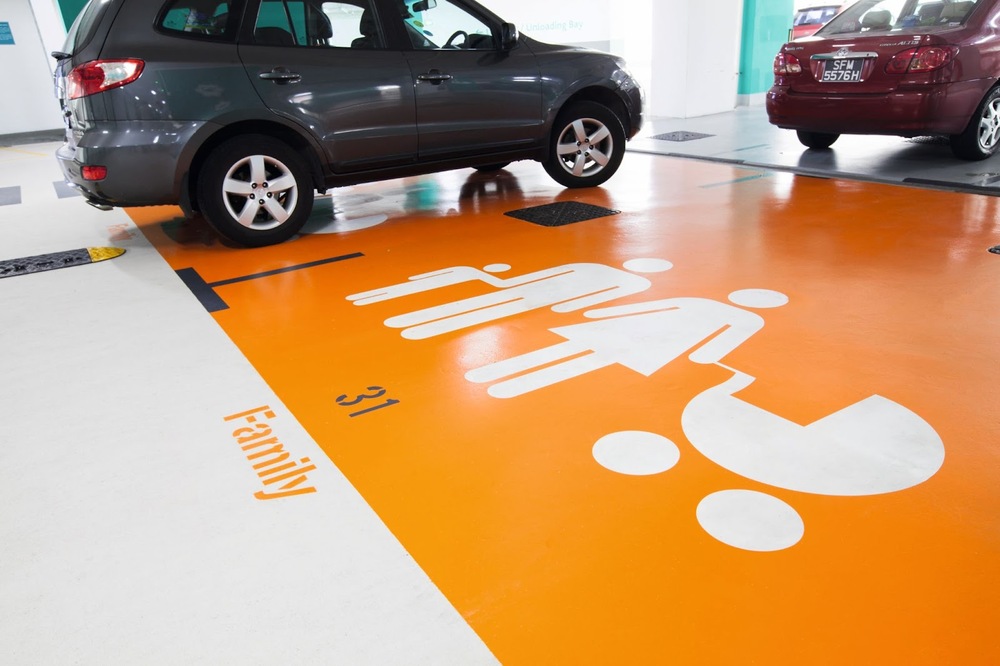
While both offer balanced protection, their performance varies based on the environment and usage. Here’s how they compare:
| Feature | DECK ONE Car Park System | Epoxy Car Park Flooring | PU (Polyurethane) Car Park Flooring |
| Durability | Good durability with quick application, suitable for medium to high duty areas | High surface hardness, great for heavy traffic in enclosed areas | Excellent flexibility and impact resistance, suited for both light and heavy traffic |
| UV Resistance | UV resistance is optional | Not UV-stable, may yellow or fade under direct sunlight | UV-resistant, ideal for intermediate, outdoor or rooftop car parks |
| Chemical Resistance | Strong resistance to oil, fuel, and common car park chemicals | Strong resistance to oil, fuel, and common car park chemicals | Better suited for harsh chemicals and high thermal exposure |
| Temperature Tolerance | Handles humidity and vapour; suitable for moisture-sensitive areas | Moderate – performs well in stable indoor environments | High – withstands heat, humidity, and sudden temperature shifts |
| Best Use Case | Fast-track projects or sites with high moisture levels | Indoor or covered car parks (basements, multi-storey) | Outdoor, rooftop, or semi-exposed car parks |
| Finish & Appearance | Semi-gloss finish; easy colour customisation | Textured, glossy finishing available with good traction | Textured, gloss and satin finish available with good traction |
| Cost | Budget-friendly option for speed and full protection | Generally more cost-effective for indoor applications | Slightly higher upfront cost but better long-term value outdoors |
The right choice depends on your site’s layout, exposure, and performance expectations.
Curious about how epoxy flooring and ESD flooring work and where they perform best? Explore our full guide to discover everything you need to know.
How FLOORFINDER Installs Long-Lasting Car Park Flooring
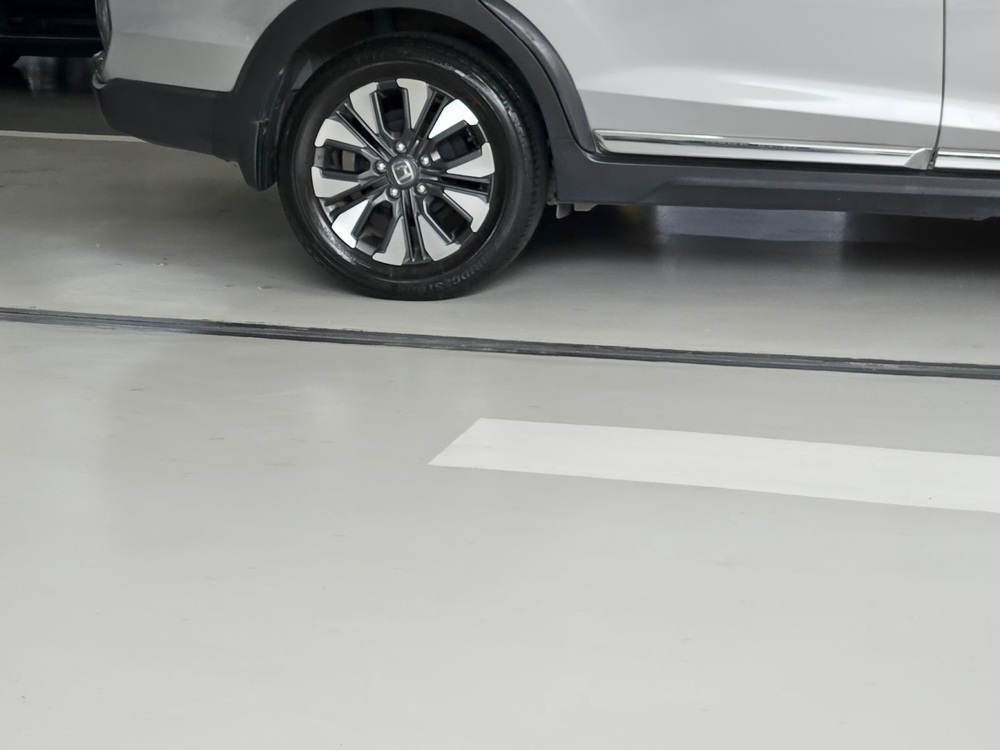
Proper expert installation is key to ensuring long-term performance, safety, and surface integrity. FLOORFINDER follows a structured process with commercial flooring solutions to deliver smooth, durable, and visually clear car park flooring systems. Here’s how it works:
1. Site Evaluation and Surface Assessment
The team begins with a detailed check of the area, assessing the substrate for cracks, moisture, and structural integrity.
2. Surface Preparation and Repair
The existing surface is cleaned, ground, and repaired to create a stable and smooth foundation for the flooring system.
3. System Build-Up
Layers are applied based on the selected system, following the manufacturer’s specifications to match the project’s durability and performance requirements.
4. Final Curing and Inspection
The surface is left to cure for the necessary duration before a final quality check is done to ensure the finish, safety, and durability meet project standards.
FLOORFINDER ensures each step is handled with care, using industrial-grade materials and skilled workmanship to meet performance standards for car park environments.
Discover how FLOORFINDER delivers reliable food and beverage flooring designed for performance and safety.
5 Simple Care Tips for Car Park Flooring
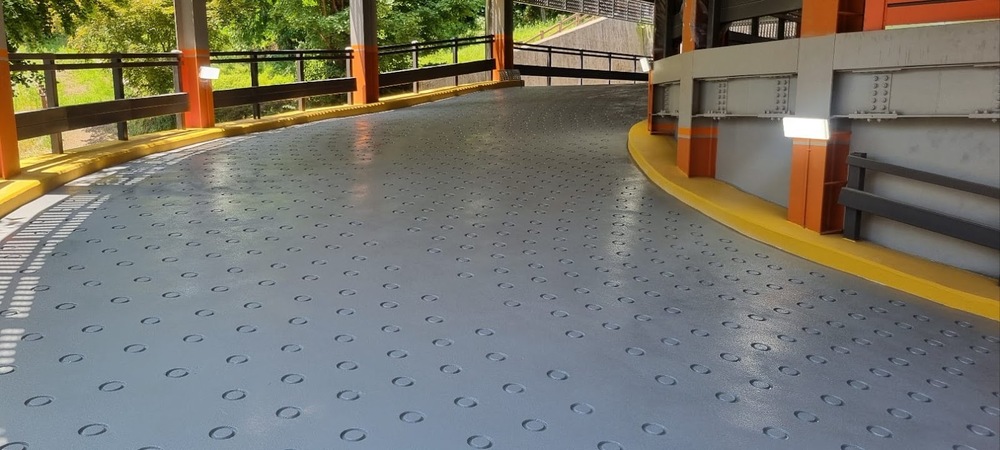
Proper care helps preserve the look and performance of your car park flooring over time. While epoxy and PU systems are built for durability, consistent upkeep ensures they stay safe, clean, and damage-free. Here are simple maintenance tips to follow:
1. Clean Regularly
Sweep and mop the surface regularly to remove dust, sand, and debris.
2. Address Spills Promptly
Clean oil, fuel, and chemical spills as soon as possible to avoid staining or surface deterioration.
3. Avoid Dragging Heavy Objects
Refrain from dragging sharp tools, pallets, or metal edges across the surface, as this can scratch or chip the coating.
4. Inspect High-Traffic Areas
Monitor zones with frequent tyre movement or turning points for signs of wear. These areas may need touch-ups or re-coating over time.
5. Schedule Periodic Maintenance
Plan for professional inspections and surface evaluations every few years, especially for larger or outdoor car parks. Recoating may be recommended based on traffic and exposure levels.
By following these care guidelines, your car park flooring stays clean, durable, and ready to perform, delivering long-term value and a safer environment for users.
Conclusion
Well-designed flooring contributes directly to the safety, efficiency, and longevity of any car park. Epoxy systems provide a dependable, low-maintenance option that can be tailored to meet the specific demands of your environment.
With proper planning and execution, your flooring can support daily operations while maintaining a clean, organised appearance.
Looking to upgrade your car park flooring? Contact FLOORFINDER today for a reliable, customised epoxy flooring solution built to last.
